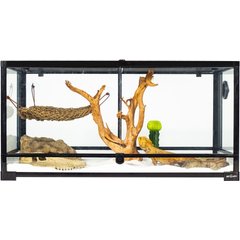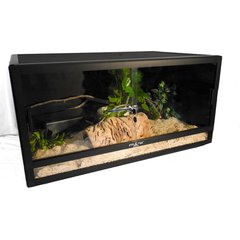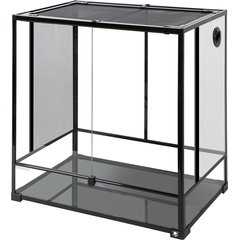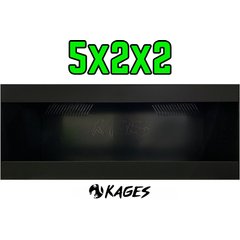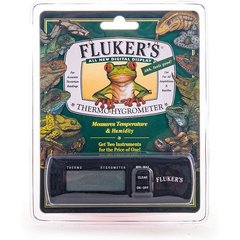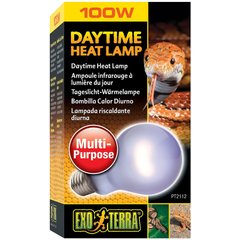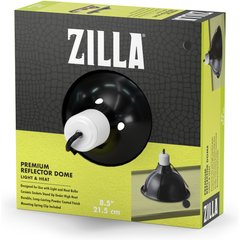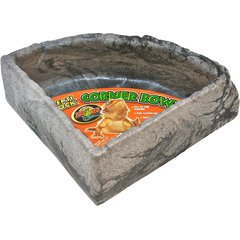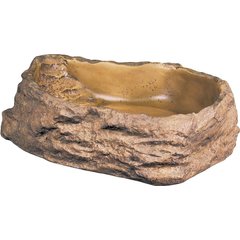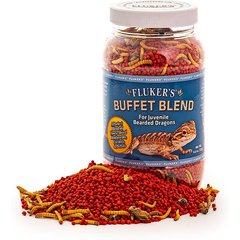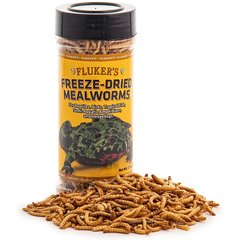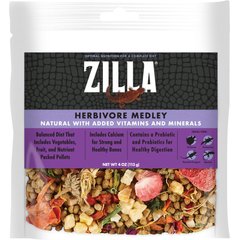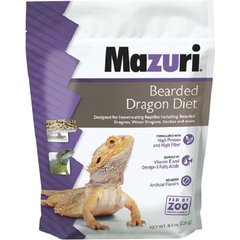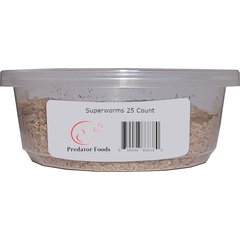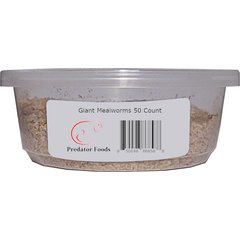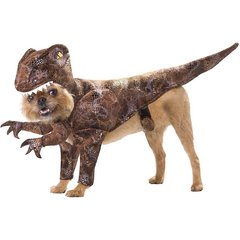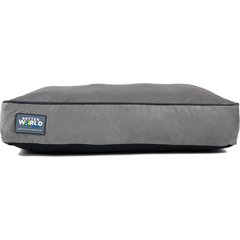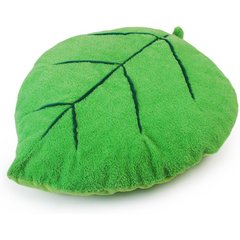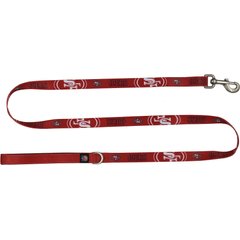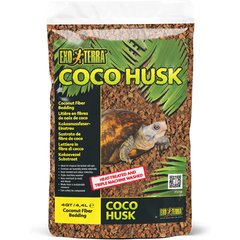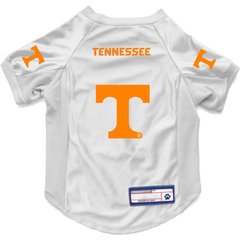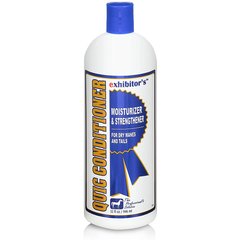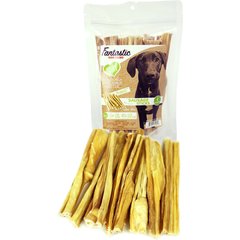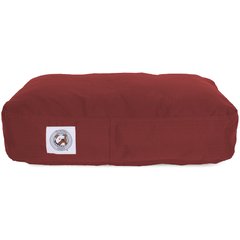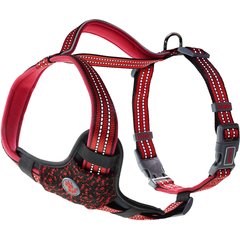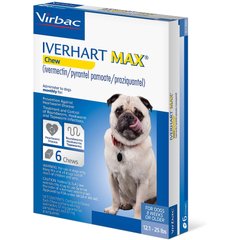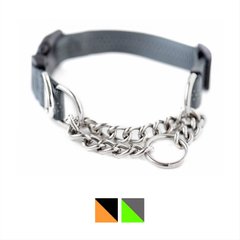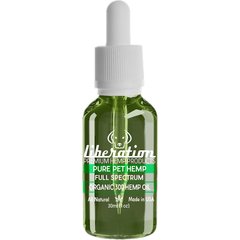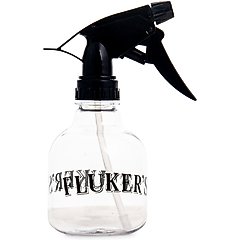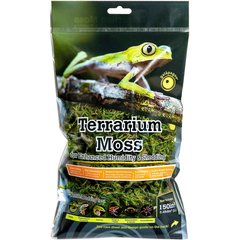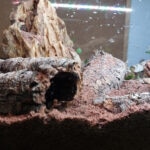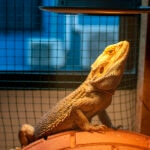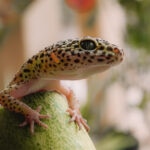Bearded Dragon Care Sheet
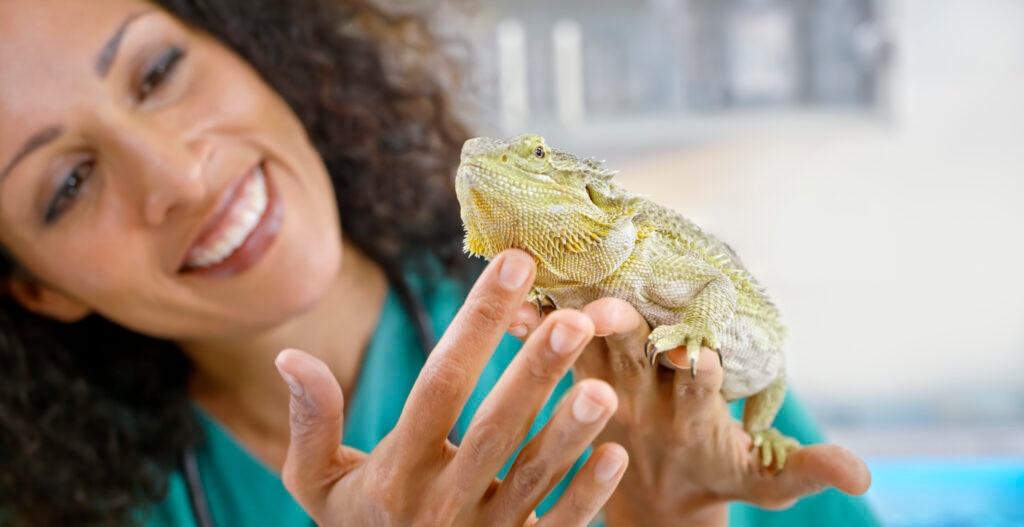
Photo by simonkr/E+
Learn how to properly care for a pet bearded dragon.
Unlike the fierce dragons portrayed from ancient myth to modern fantasy, bearded dragons are friendly pets to care for. Native to Australia, bearded dragons—or “beardies”—are great for beginners and long-time reptile enthusiastsalike.
Whether you’re new to caring for bearded dragons or need a refresher, here’s what you need to know about caring for your beardie.
Bearded Dragon Overview
- Caring for a bearded dragon requires the right habitat, handling, and food.
- Bearded dragons need lots of heat and humidity, with temperatures reaching as high as 100 degrees F.
- With proper care, beardies can get up to 2 feet long and live more than 10 years.
Fun Facts About Bearded Dragons
- Even though they have “dragon” in their name, bearded dragons are part of the lizard family.
- Their name comes from their defense—when threatened, bearded dragons flare the skin underneath their chin, resembling a beard.
- Insects, including roaches, crickets, and worms, make up about 70% of a juvenile beardie’s diet.
Bearded Dragon Habitat
Regardless of age or size, make sure you’re getting the biggest habitat for your pet. Juvenile beardies can be kept in a 20-gallon enclosure, while adults should have at least a 75-gallon habitat. Bearded dragons reach adulthood within a year.
Recommended Products
Keep bearded dragons in independent habitats, regardless of gender. Beardies are territorial and shouldn’t be housed together.
Bearded dragons need a lot of heat. Use two thermometers to check the temperatures daily—one in the cool spot—ranging from 75–85 F—and one in the warm area, keeping it around 95–105 F. It’s also important to keep the humidity between 30–50% for your bearded dragon to thrive.
Recommended Product
Use a ceramic heater or incandescent light to make a basking area for your beardie. Wattage depends on your enclosure size. Adjust the wattage to stay within the recommended temperature. UV lights have different intensity levels, so follow the manufacturer’s recommendations on where to place the bulb in your enclosure for optimal living.
Recommended Products
Choose a safe substrate for their enclosure, like reptile carpet or liner. There’s a chance your bearded dragon will ingest loose substrate, so line the enclosure with one that won’t impact digestion.
Spot-clean enclosures daily by removing discarded food and soiled materials. Wash food and water dishes daily. Disinfect and thoroughly clean enclosures weekly or more often if you have more than one beardie in one enclosure.
Recommended Products
What Do Bearded Dragons Eat?
Bearded dragons have diets that differ based on their age. Younger bearded dragons need an insect-heavy diet of gut-loaded insects with a nutrient-dense insect supplement. This gives your beardie fortified vitamins and minerals that build and maintain a healthy diet.
Recommended Products
Adult and older bearded dragons should have a vegetarian-heavy diet, with 70–80% of their food intake coming from vegetables. The other 20–30% should be live insects that are also gut-loaded and dusted. You can use pelleted bearded dragon food to supplement their diet.
Recommended Products
Avoid feeding your beardie onions, mushrooms, or fireflies. They are all toxic and ingesting them could lead to serious illness or even death. Also, avoid spinach, beet greens, and other high-oxalate foods. These foods don’t absorb in a bearded dragon’s body.
While healthy adult bearded dragons can go up to 10 days without food, it’s not ideal. Long stretches without food can lead to weight loss, malnutrition, and other health problems.
Bearded dragons should always have access to fresh, clean water. Lack of enough water can cause beardies to get constipated. Water and foods with a high water content are vital for easy digestion.
Water isn’t only for hydration; beardies soak in it to help with shedding. Keep a shallow water dish available for your bearded dragon to drink and soak as they please.
Bearded Dragon Handling
It’s important to give your young beardie plenty of time to grow before regular handling. Unless otherwise directed by your vet or another professional, avoid handling baby bearded dragons.
When your pet is a couple of months old and at least 6 inches long, you can start holding them. In the beginning, keep handling minimal so you don’t stress them out.
To handle, put your hand in their terrarium and lightly touch their chin. This encourages them to climb up your arm. If this doesn’t happen, reach in with your free hand to lightly grab them around the body and place them on your arm.
You can also try scooping them up with both hands to make sure all of their legs get support. Try not to grab them by the belly, leaving their legs exposed.
Too much holding for long periods or by many different people can cause stress on your beardie. Limit who holds your bearded dragon and keep activity to 10–15 minutes per session. Being away from their habitat can change their body temperature too much.
Also, avoid handling your beardie right after mealtime, since that can upset their tiny stomach. Give them a couple of hours to digest before safe handling.
Always thoroughly wash your hands before and after handling a bearded dragon or anything in its enclosure, since all reptiles could potentially carry infectious diseases.
Bearded Dragon Health
Take your bearded dragon to a vet at least once a year for an annual checkup or if you notice any unhealthy signs in your pet. Bearded dragons let you know if they aren’t doing well in a couple of ways, including:
- Sunken or swollen eyes, or if you notice discharge rather than clear, clean eyes
- Discharge around the vent rather than a clean vent
- Pink ulcerations, lesions, or stuck shed rather than clean, intact skin
- Swelling, bumps, lumps, or other skin conditions like abscesses
- Refusing food or noticing an unhealthy body weight or condition
- Sunken belly, or the inability to ambulate or posture correctly
Bearded dragons are at risk of intestinal parasites, eye infections, trauma, GI impactions, and other common bearded dragon illnesses.
Supply Checklist
Your bearded dragon should have at least a 20-gallon habitat for juveniles and a minimum of 40 gallons for adult beardies. You’ll also need some supplies, including:
- A heat light and a heat fixture
Recommended Product
- UVB lighting and fixture
Recommended Product
- Food and water dishes
Recommended Product
- Bearded dragon food, as well as live reptile food, and treats
Recommended Product
Recommended Product
- Moss
Recommended Product
- Hideaway places
Recommended Product
- Climbing decor and basking rocks
Recommended Product
- Plants
Recommended Product
- Humidity gauge
Recommended Product
- Under-tank heater
Recommended Product
- A cricket keeper, cricket food, and cricket quencher
Recommended Product
- Multivitamin and calcium supplements—with and without vitamin D
Recommended Product
- Mister
Recommended Product
While you can put substrate or reptile carpet in your enclosure, avoid gravel, wood chips, or walnut shells. These are indigestible and could obstruct your beardie’s gastrointestinal tract.
Use shallow feeding dishes during mealtimes to prevent your pet from eating substrate. Loose substrate could also obstruct a bearded dragon’s GI tract.
To boost humidity, you can add moist sphagnum moss like Galapagos Sphagnum Reptile, Amphibian & Insect Terrarium Moss inside a hideaway, and also add non-toxic live plants.
Recommended Product
FAQs About Bearded Dragons
- Do bearded dragons make good pets?
Yes, bearded dragons make wonderful pets. They are one of the most popular pets in the lizard family.
- How often should I hold my bearded dragon?
Hold your adult bearded dragon for 10–15 minutes a few times a day.
- Will bearded dragons cuddle with you?
Bearded dragons are friendly and enjoy being held, but they may not cuddle with you the same way humans or other pets do.
- How long do bearded dragons live?
With great care and attention, bearded dragons can live up to 8–10 years.
- What do bearded dragons eat?
Bearded dragons eat differently based on their ages. Young beardies mostly eat insects like roaches, worms, and crickets. Older bearded dragons consume a vegetarian-heavy diet.
- How big do bearded dragons get?
Adult bearded dragons can get as big as 2 feet long, with half of that length going to the tail.
- Do bearded dragons bite?
Bearded dragons rarely bite or scratch.
Click here for a printable PDF version of this care sheet.
